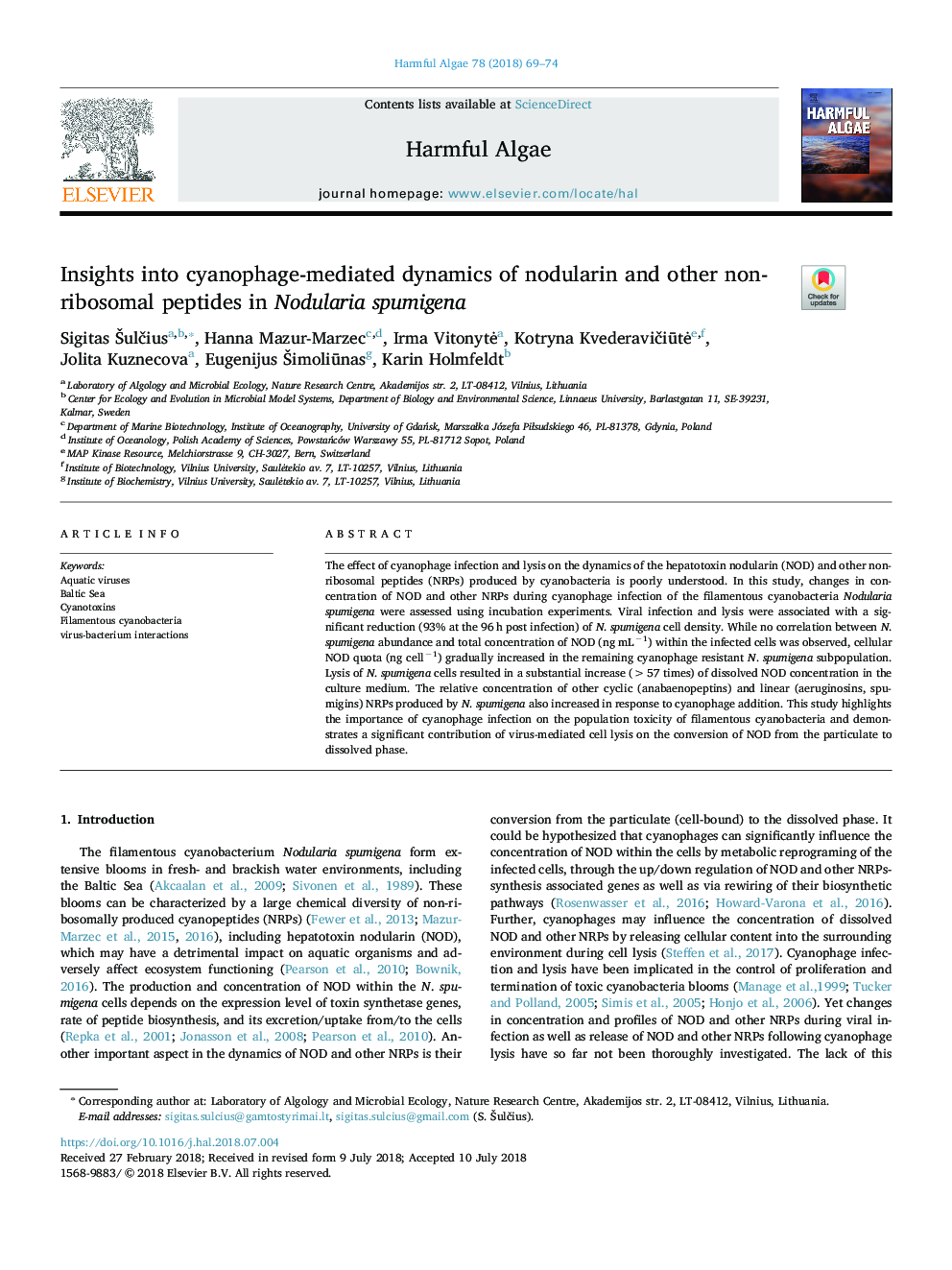| Article ID | Journal | Published Year | Pages | File Type |
|---|---|---|---|---|
| 8885623 | Harmful Algae | 2018 | 6 Pages |
Abstract
The effect of cyanophage infection and lysis on the dynamics of the hepatotoxin nodularin (NOD) and other non-ribosomal peptides (NRPs) produced by cyanobacteria is poorly understood. In this study, changes in concentration of NOD and other NRPs during cyanophage infection of the filamentous cyanobacteria Nodularia spumigena were assessed using incubation experiments. Viral infection and lysis were associated with a significant reduction (93% at the 96âh post infection) of N. spumigena cell density. While no correlation between N. spumigena abundance and total concentration of NOD (ng mLâ1) within the infected cells was observed, cellular NOD quota (ng cellâ1) gradually increased in the remaining cyanophage resistant N. spumigena subpopulation. Lysis of N. spumigena cells resulted in a substantial increase (>57 times) of dissolved NOD concentration in the culture medium. The relative concentration of other cyclic (anabaenopeptins) and linear (aeruginosins, spumigins) NRPs produced by N. spumigena also increased in response to cyanophage addition. This study highlights the importance of cyanophage infection on the population toxicity of filamentous cyanobacteria and demonstrates a significant contribution of virus-mediated cell lysis on the conversion of NOD from the particulate to dissolved phase.
Related Topics
Life Sciences
Agricultural and Biological Sciences
Aquatic Science
Authors
Sigitas Å ulÄius, Hanna Mazur-Marzec, Irma VitonytÄ, Kotryna KvederaviÄiÅ«tÄ, Jolita Kuznecova, Eugenijus Å imoliÅ«nas, Karin Holmfeldt,
